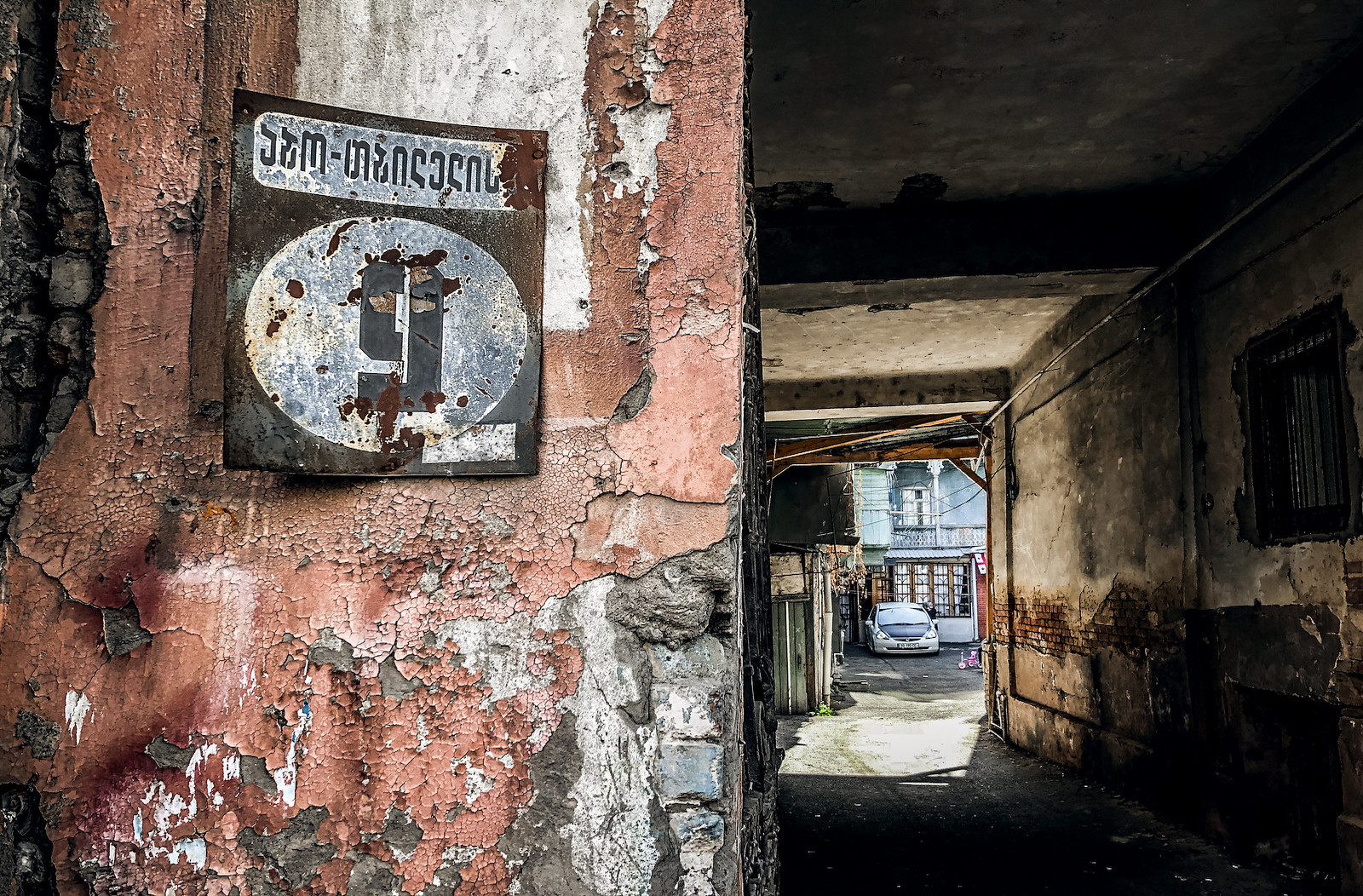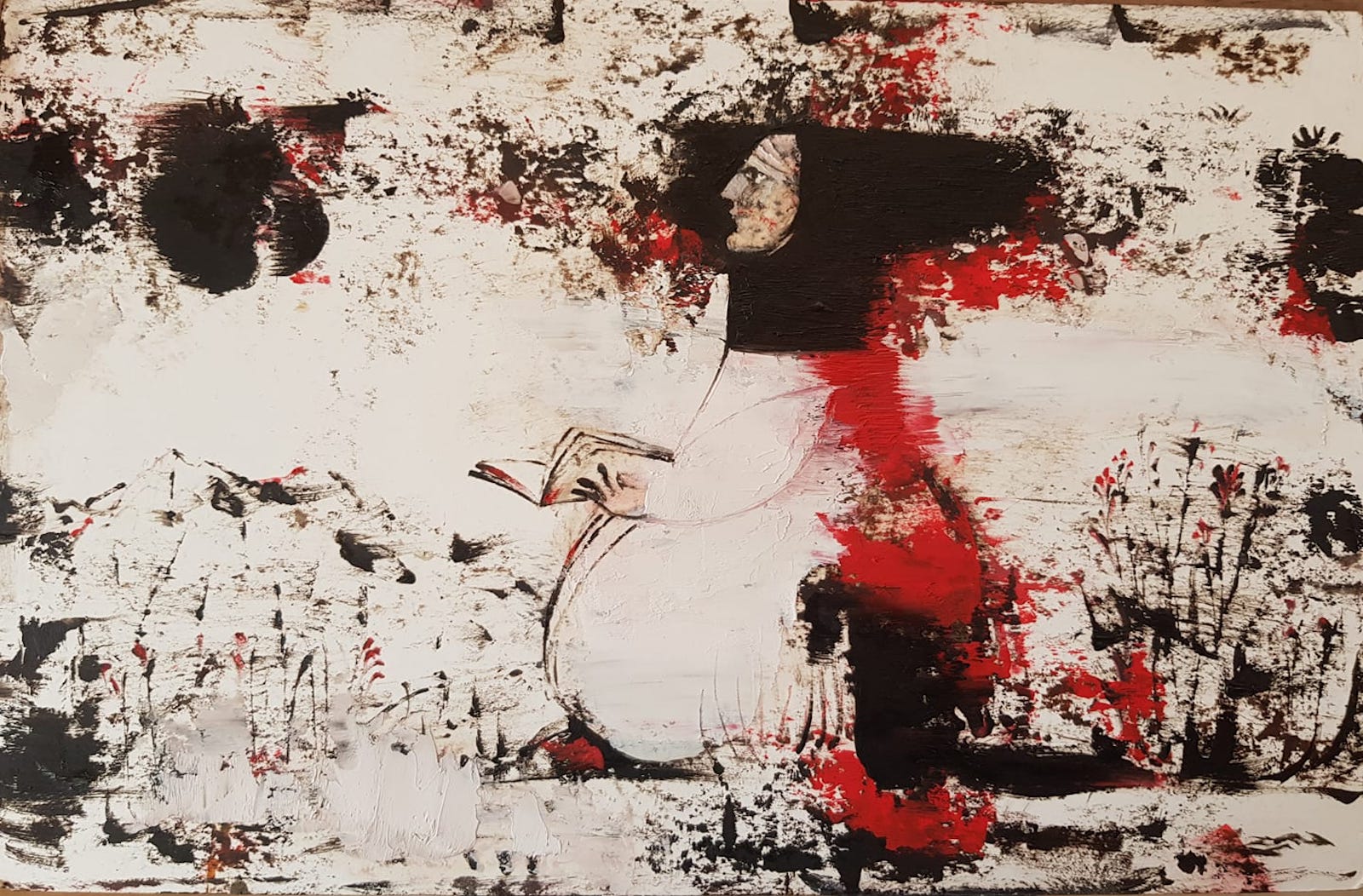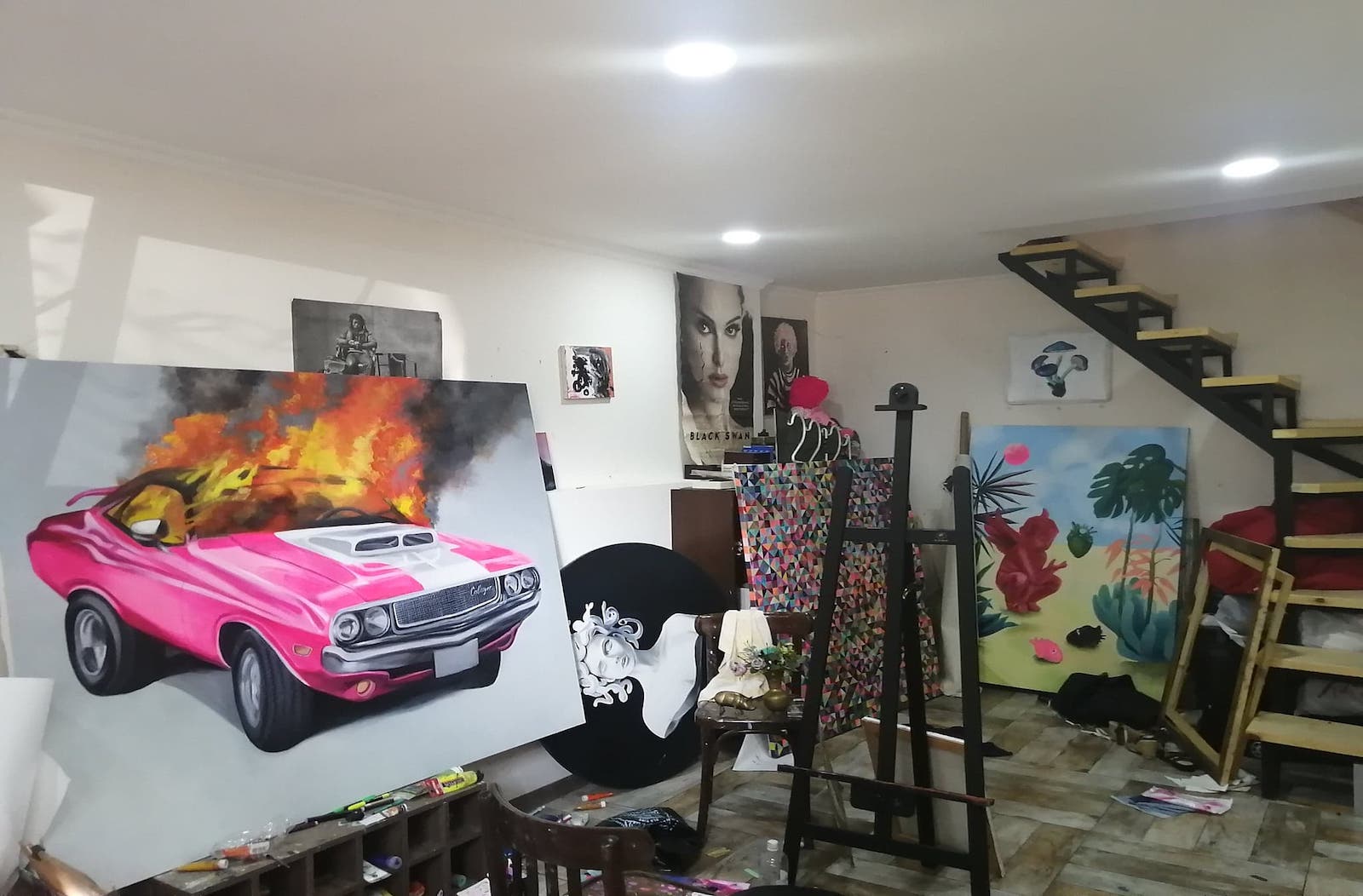
Ezo – The Tbilisian Courtyard
[et_pb_section fb_built=”1″ _builder_version=”4.4.1″][et_pb_row _builder_version=”4.4.1″ width=”100%” max_width=”100%”][et_pb_column type=”4_4″ _builder_version=”4.4.1″][et_pb_text _builder_version=”4.4.4″ header_font=”|700|||||||” header_2_font=”|700|||||||” header_3_font=”|700|||||||” header_4_font=”|700|||||||” header_5_font=”|700|||||||” header_6_font=”|700|||||||” custom_margin=”||50px||false|false” border_style_all=”dotted” border_color_bottom=”#f1f1f1″]
The Walls Have Ears
“Shh!
Shh!
No one should hear us!” – a phrase from the film “Keto and Kote” (comic Opera by Victor Dolidze; premiered in Tbilisi in 1919)
This is not a story about walls, nor ears. This is a story about an old Tbilisian Yard, in which I spent my childhood. Fortunately, I remember much from those times, “dark years of the 1990s, 2000s” as we call it nowadays. Despite its darkness, power cuts, and cold, which were part of our daily life, my childhood also had its peculiarities – a Tbilisian Yard.
[/et_pb_text][et_pb_image src=”https://iamtbilisi.com/wp-content/uploads/2020/02/M8.jpeg” show_bottom_space=”off” force_fullwidth=”on” _builder_version=”4.4.1″][/et_pb_image][et_pb_text _builder_version=”4.6.1″ text_font=”||||||||” text_text_color=”rgba(0,0,0,0.55)” text_font_size=”12px” text_line_height=”1.1em” header_font=”|700|||||||” header_2_font=”|700|||||||” header_3_font=”|700|||||||” header_4_font=”|700|||||||” header_5_font=”|700|||||||” header_6_font=”|700|||||||” background_color=”#f1f1f1″ custom_margin=”||||false|false” custom_padding=”8px|13px|8px|13px|true|true” hover_enabled=”0″ locked=”off” sticky_enabled=”0″]
Tbilisian courtyard in Avlabari.
[/et_pb_text][et_pb_text _builder_version=”4.6.1″ header_font=”|700|||||||” header_2_font=”|700|||||||” header_3_font=”|700|||||||” header_4_font=”|700|||||||” header_5_font=”|700|||||||” header_6_font=”|700|||||||” custom_margin=”40px||50px||false|false” custom_padding=”||||false|false” hover_enabled=”0″ border_style_all=”dotted” border_color_bottom=”#f1f1f1″ sticky_enabled=”0″]
The Creaking
A Tbilisian Yard is an inevitable part of the old suburbs of Tbilisi. At first, it was called the Italian yard, which, as a term, existed during the Soviet Union. The story goes that after several families settled in one house, the Tbilisian yard became quite noisy in a different and unfamiliar way. Since Italian cinematography of neo-realism had a big influence during that time, it greatly influenced the naming and, finally, Tbilisian was changed into Italian. This noise was different in ways as it belonged to multiethnic society, such as Jews, Armenians, Georgians, Russians, Greeks, etc.
What I remember from Tbilisian Yards, is the sound of creaking wooden floors, the rustling of dusty curtains, non-stop rolling of dice, the Domino tiles banging noisily on the tabletop, the cracking of a ripe watermelon, etc. And I’d never imagined that I would write about these details in such a nostalgic way.
The whole process of washing the carpets and rugs with the brush, gossiping, and drinking together created a new form of community, which existed beyond the ethnic barriers.
I remember once a drunkard told me that the Tbilisian neighborhood was the only tangible thing he could have at that moment and that these connections which he felt with others, were the most meaningful and precious things in his life. Maybe these words were exaggerated, but I can truly say that those who lived in Tbilisian Yards, always talk about the relationships with neighbors in a sad, melancholic way, because they can’t have these kinds of relations nowadays. The truth is, they don’t feel connected anymore.
[/et_pb_text][et_pb_image src=”https://iamtbilisi.com/wp-content/uploads/2020/03/balkon.jpg” show_bottom_space=”off” force_fullwidth=”on” _builder_version=”4.4.1″][/et_pb_image][et_pb_text _builder_version=”4.6.1″ text_font=”||||||||” text_text_color=”rgba(0,0,0,0.55)” text_font_size=”12px” text_line_height=”1.1em” header_font=”|700|||||||” header_2_font=”|700|||||||” header_3_font=”|700|||||||” header_4_font=”|700|||||||” header_5_font=”|700|||||||” header_6_font=”|700|||||||” background_color=”#f1f1f1″ custom_margin=”||||false|false” custom_padding=”8px|13px|8px|13px|true|true” hover_enabled=”0″ locked=”off” sticky_enabled=”0″]
Tbilisian courtyard in Avlabari.
[/et_pb_text][et_pb_text _builder_version=”4.6.1″ header_font=”|700|||||||” header_2_font=”|700|||||||” header_3_font=”|700|||||||” header_4_font=”|700|||||||” header_5_font=”|700|||||||” header_6_font=”|700|||||||” custom_margin=”40px||50px||false|false” custom_padding=”||||false|false” hover_enabled=”0″ border_style_all=”dotted” border_color_bottom=”#f1f1f1″ sticky_enabled=”0″]
The Thin Walls
The impeccable appearance of Tbilisian Yard’s facade barely represented the life of its inhabitants. During the Soviet era and after the collapse of the regime, they witnessed repressions, revolutions, civil war and chaos beyond their windows.
The original owners of the houses had occupied entire floors. They were most probably pre-Bolshevik Georgian elite from the late 19th century. After the Bolshevik occupation of Tbilisi in February 1921, the floors were unevenly divided into small portions, which meant more people moving in. Thus, it shaped the urban culture of Tbilisi, which created a shared space for many multiethnic families, as I mentioned before.
Because of the rough divisions of entire houses and the loss of original architecture, space became communal, which brought up many issues among the neighbors. The phrase: “walls have ears” was used in jest, knowing that everything one does or speaks, would be heard by neighbors. But the bond, that people talk about with unbearable nostalgia, prevailed over the need for private space.
I think that such a level of strength in connections was built on the foundation of daily life they shared with each other.
[/et_pb_text][et_pb_image src=”https://iamtbilisi.com/wp-content/uploads/2020/03/TBS1.jpg” show_bottom_space=”off” force_fullwidth=”on” _builder_version=”4.4.1″][/et_pb_image][et_pb_text _builder_version=”4.6.1″ text_font=”||||||||” text_text_color=”rgba(0,0,0,0.55)” text_font_size=”12px” text_line_height=”1.1em” header_font=”|700|||||||” header_2_font=”|700|||||||” header_3_font=”|700|||||||” header_4_font=”|700|||||||” header_5_font=”|700|||||||” header_6_font=”|700|||||||” background_color=”#f1f1f1″ custom_margin=”||||false|false” custom_padding=”8px|13px|8px|13px|true|true” hover_enabled=”0″ locked=”off” sticky_enabled=”0″]
The old town, Tbilisi.
[/et_pb_text][et_pb_text _builder_version=”4.6.1″ header_font=”|700|||||||” header_2_font=”|700|||||||” header_3_font=”|700|||||||” header_4_font=”|700|||||||” header_5_font=”|700|||||||” header_6_font=”|700|||||||” custom_margin=”40px||50px||false|false” custom_padding=”||||false|false” hover_enabled=”0″ border_style_all=”dotted” border_color_bottom=”#f1f1f1″ sticky_enabled=”0″]
Ezo – A Space Never To Be Forgotten
Historic districts on both sides of Mtkvari River – Sololaki, Abanotubani, Ortachala, Avlabari, Kala Ubani and others are parts of old Tbilisi, which mainly accommodated Tbilisian Yards, so-called – Ezo. The experience of communal wooden balconies, shared lavatory, and kitchen, had an everlasting effect on the characteristics of inhabitants of the yard. They created unique symbols, which were understood only by them.
Regardless of the multiethnic society and living in a shared space, and therefore, diverse cultures, the atmosphere was filled with specific social-cultural relations between the neighbors. The wooden balcony, which became a gathering place for inhabitants, was the main transparency center.
The aesthetics of neglected voices of the 20th century, the noise of muffled talks beyond the thin walls, and the stories of each family are deeply rooted in the wooden houses of Tbilisian Yards.
If you’re lucky and can enjoy a few minutes of solitude in one of these old yards you may still hear the genuine laughter that’s trapped in the space as it keeps the old walls standing.
[/et_pb_text][/et_pb_column][/et_pb_row][/et_pb_section]


